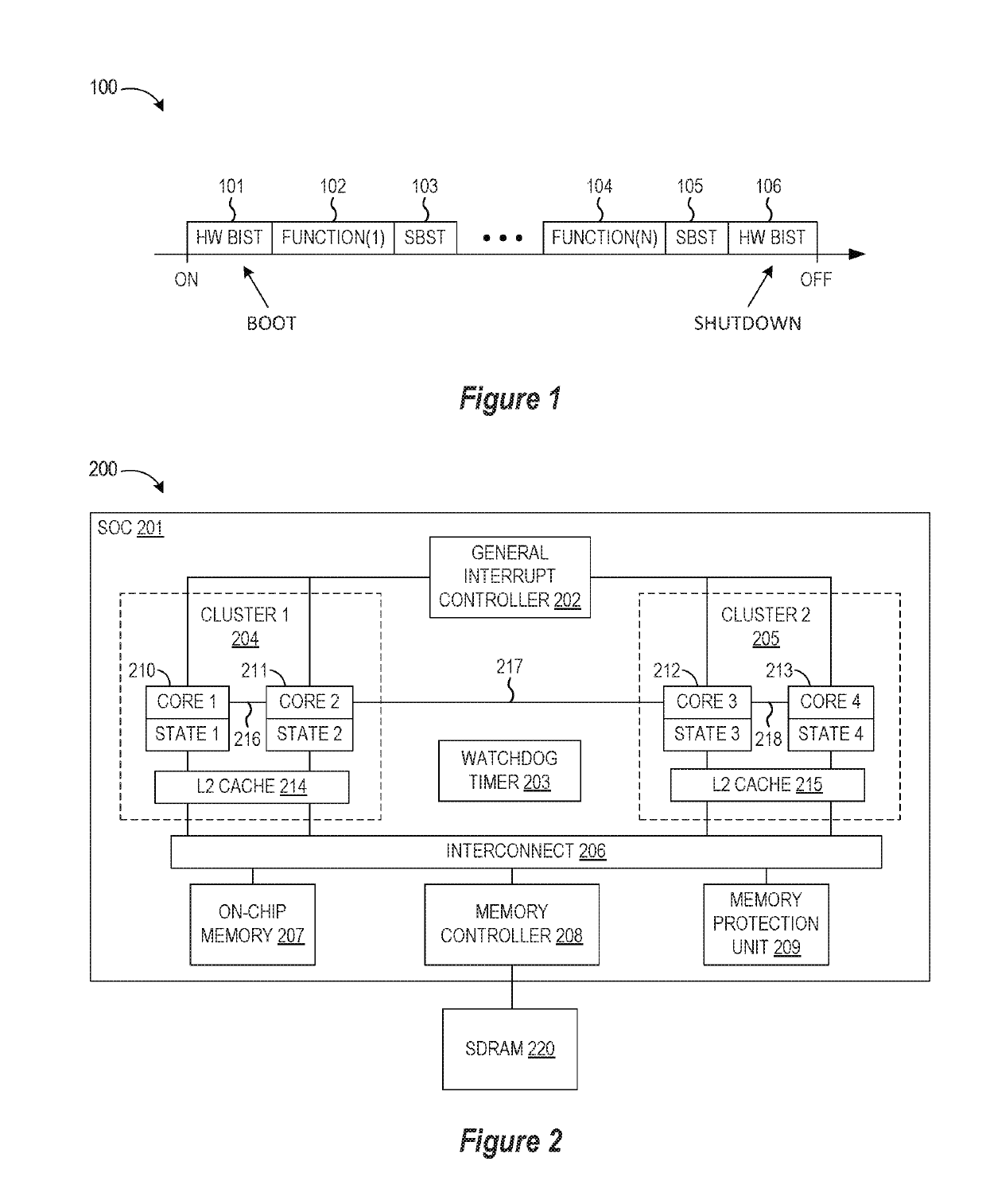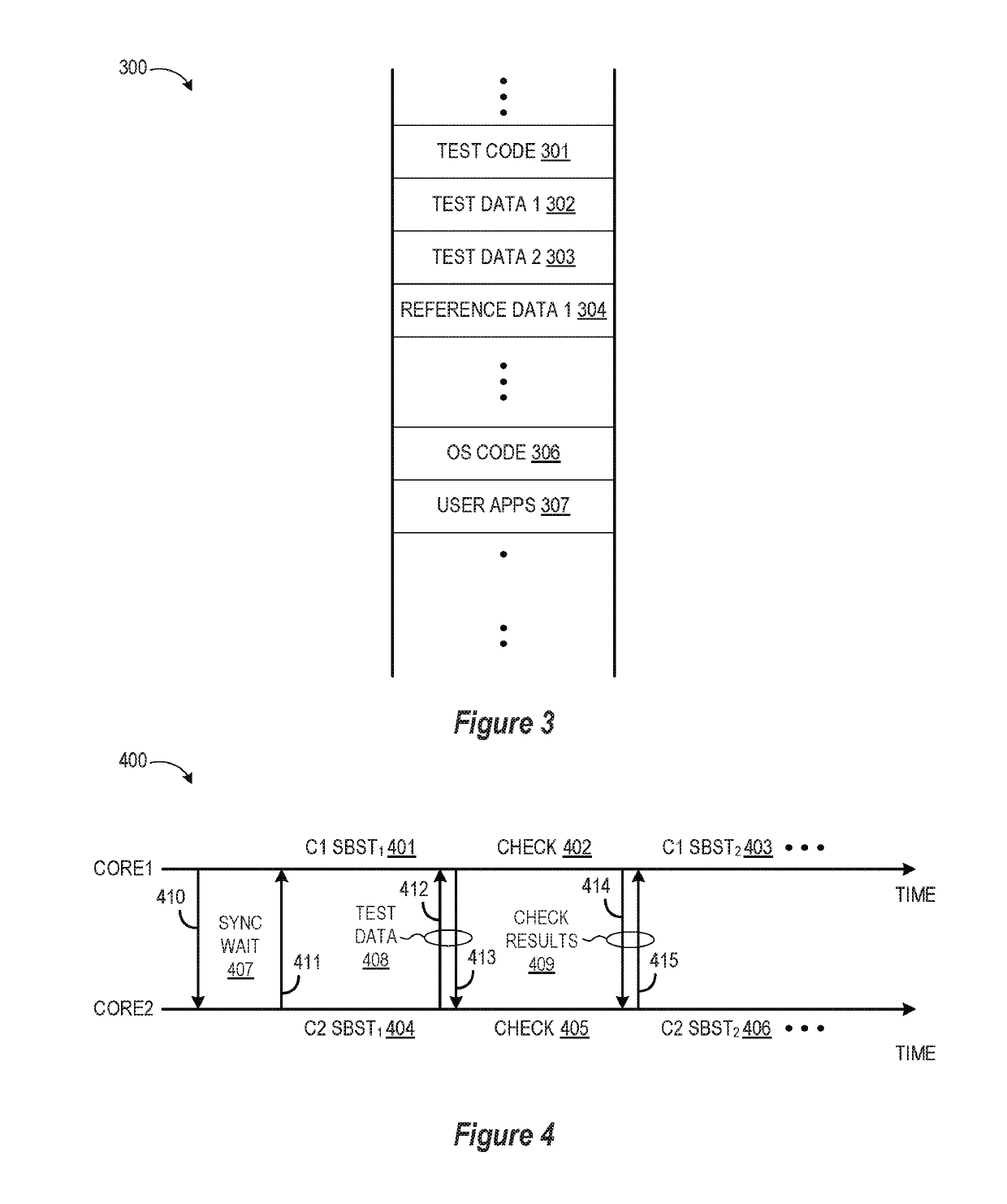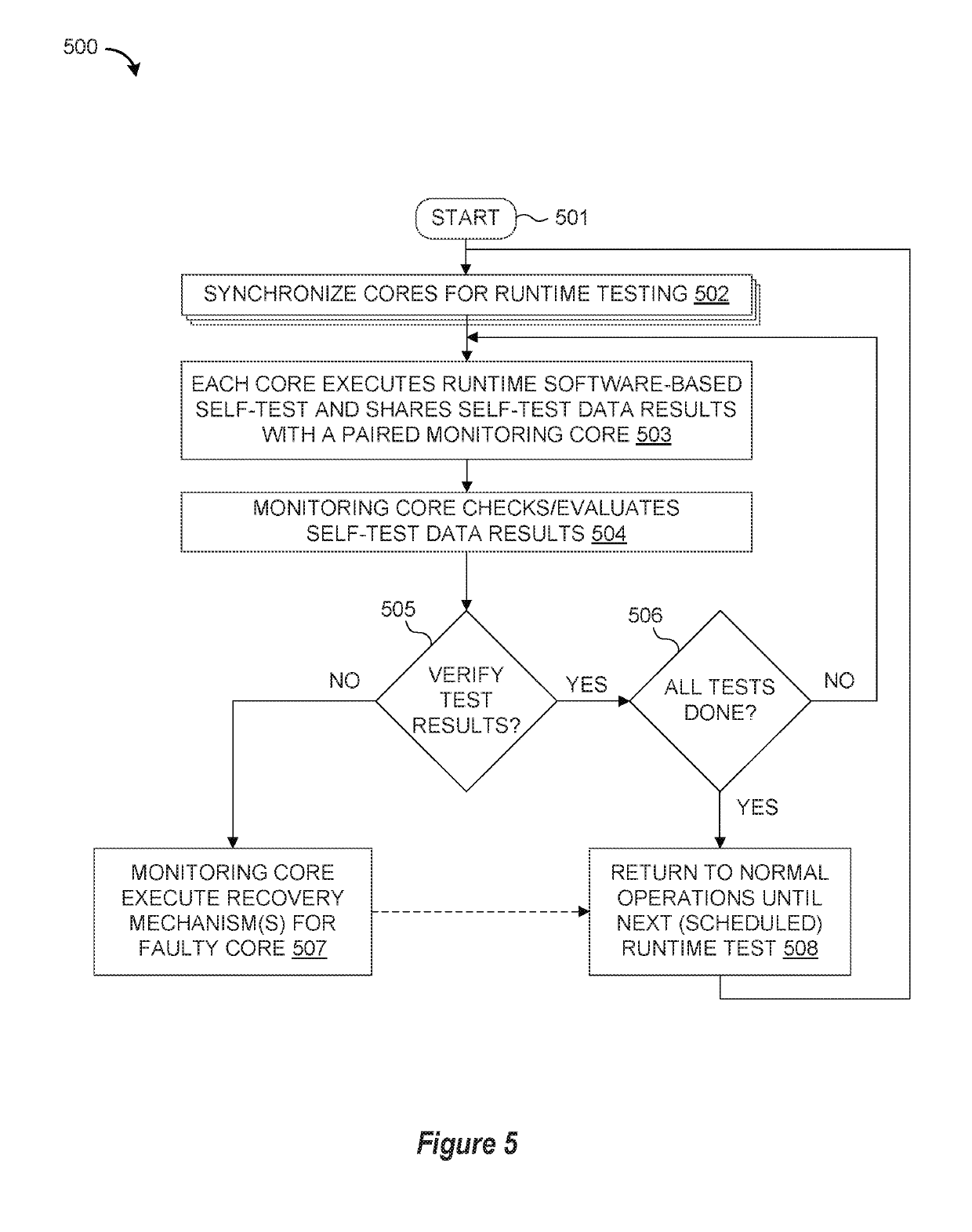Runtime Software-Based Self-Test with Mutual Inter-Core Checking
a software and runtime technology, applied in the field of integrated circuit testing, can solve problems such as failure to activate a fault recovery mechanism, add cost and complexity to the soc device, corrupt the processor state,
- Summary
- Abstract
- Description
- Claims
- Application Information
AI Technical Summary
Benefits of technology
Problems solved by technology
Method used
Image
Examples
Embodiment Construction
[0011]An adaptive, efficient, and flexible hardware fault detection apparatus, system, architecture, and methodology are described wherein multiple processor cores execute software-based self-tests during runtime and perform mutual inter-core checking, thereby enabling in-field diagnosis and screening of processor cores of multiprocessor system-on-chip (MPSoC) devices to detect hardware faults, system state corruptions, and / or flow control problems. By executing software self-tests concurrently on multiple cores to perform mutual monitoring of self-test results in software, a flexible, low cost solution is provided for thoroughly scanning for triggered faults in each core-under-test and quickly reacting to detections without requiring dedicated hardware fault detection or recovery mechanisms. In selected embodiments of the present disclosure in which multi-core automotive microcontroller SoC devices are tested for functional safety, a plurality of cores are synchronized to concurren...
PUM
 Login to View More
Login to View More Abstract
Description
Claims
Application Information
 Login to View More
Login to View More - R&D
- Intellectual Property
- Life Sciences
- Materials
- Tech Scout
- Unparalleled Data Quality
- Higher Quality Content
- 60% Fewer Hallucinations
Browse by: Latest US Patents, China's latest patents, Technical Efficacy Thesaurus, Application Domain, Technology Topic, Popular Technical Reports.
© 2025 PatSnap. All rights reserved.Legal|Privacy policy|Modern Slavery Act Transparency Statement|Sitemap|About US| Contact US: help@patsnap.com



